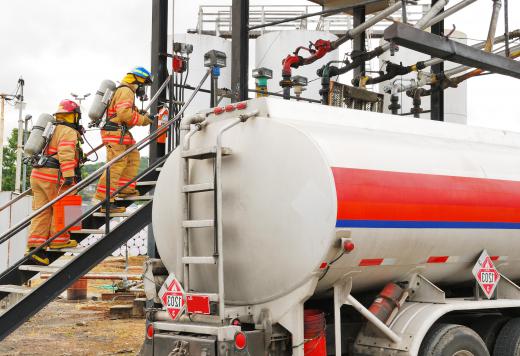A fire resistant wall is a structure designed to slow the spread of heat, smoke, and flames during an emergency. Properly constructed firewalls give occupants more time to exit the building safely during a fire, and may help reduce total property damage. By slowing or preventing the spread of fire, these walls give firefighters more time to save the building and its contents, or to perform rescues.
It's important to understand that a fire resistant wall is not designed to be completely fireproof. Instead, each fire wall is given a specific rating based on the amount of time it can prevent the spread of fire. In buildings that are located very close to one another, an exterior fire resistant wall may have a three-hour rating, which means it can prevent the spread of fire for up to three hours. Some interior walls may only feature a 20-minute rating, depending on the risk of fire, the number of exits, and the occupant load of the structure.

Many cities require fire resistant wall construction as part of local building codes and standards. In the U.S., fire-related codes are often based upon standards developed by the National Fire Protection Association (NFPA). NFPA and similar organizations specify how fire walls should be constructed, tested, and maintained to hold up against high temperatures, smoke, and flames. The duration of the fire rating is often based on the types of materials used in the building, or on the functions performed within the facility.

A fire resistant wall may be built from concrete or masonry, as these materials offer a natural resistance to fire. In order to build a fire wall from drywall, builders must include special fire-resistant gypsum products designed to slow the spread of flames or heat. Fire-rated drywall may also be used as sheathing to protect unfinished walls or insulation in unoccupied areas of the building. When steel is included in a fire resistant wall, it may be sprayed with a cementitious coating designed to help the metal hold up against high temperatures.
During fire resistant wall construction, all components used to build the wall must include an appropriate fire rating. For example, any windows, doors or glass included in the wall must be fire-resistant. These objects are typically made from special materials in order to ensure the proper level of fire resistance. All ducts or pipes that penetrate the wall must have the same fire rating, and special caulk must be used to seal all cracks, gaps, and openings around these penetrations.
